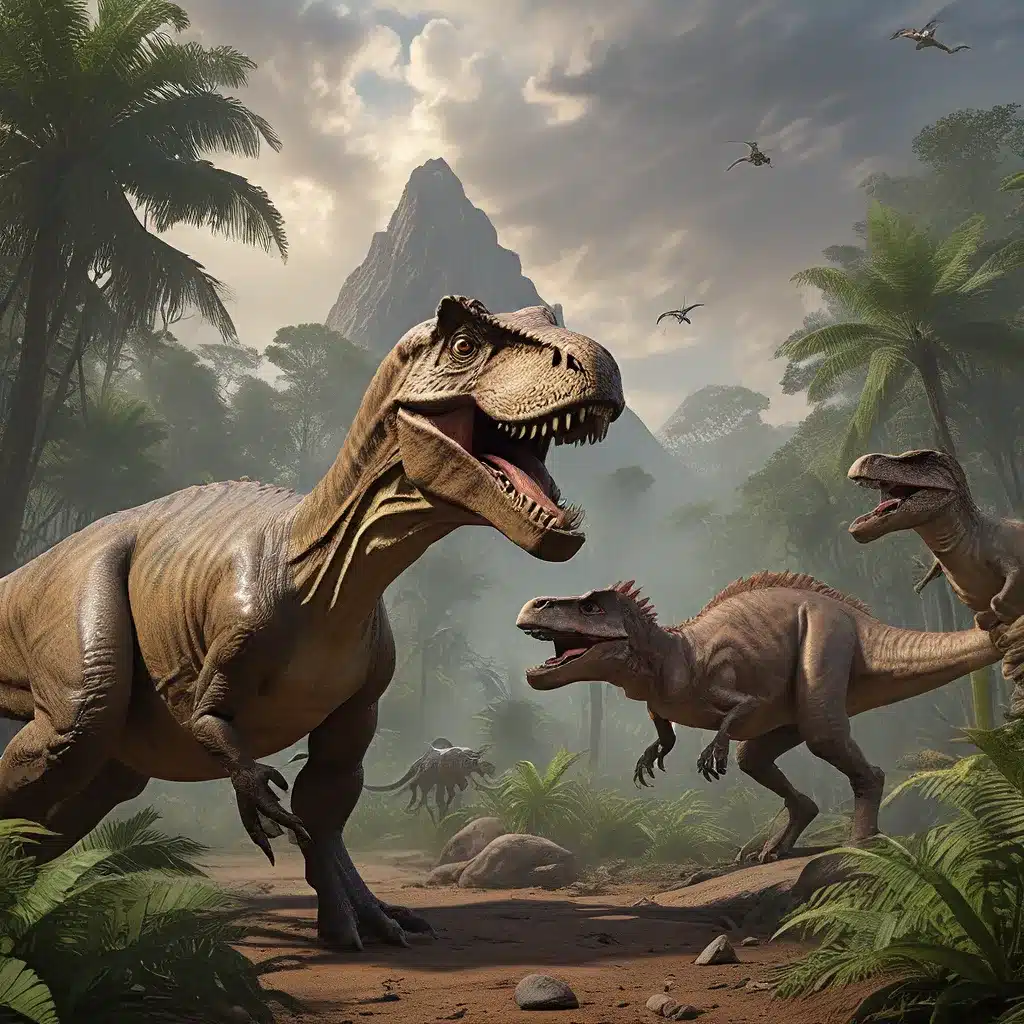
Unearthing the Mysteries of the Jurassic Mile
In the rugged badlands of Wyoming, a remarkable discovery has captivated the world of paleontology. Nestled within the Morrison Formation, a vast geological treasure trove, lies the Jurassic Mile – a fossil-rich, mile-square plot of land that promises to rewrite our understanding of the Late Jurassic Period, a time when dinosaurs roamed the Earth in awe-inspiring splendor.
Scientists from the University of Manchester have joined forces with the Children’s Museum of Indianapolis, the Natural History Museum in London, and the Naturalis Biodiversity Center in Leiden, Netherlands, to embark on a groundbreaking expedition to explore and uncover the secrets hidden within the Jurassic Mile.
This international collaboration, dubbed “Mission Jurassic,” brings together more than 100 scientists from three countries, each contributing their unique expertise to the project. Led by Professor Phil Manning and Dr. Victoria Egerton from the University of Manchester, the team is poised to utilize cutting-edge imaging techniques and powerful computational resources to delve into the Jurassic past.
Uncovering Dinosaur Treasures
The Jurassic Mile has already yielded a trove of remarkable discoveries, with nearly 600 specimens weighing over six tons having been collected in just the past two years. Among these finds are the 80-foot-long Brachiosaur and a 90-foot-long Diplodocid, two of the most iconic sauropod dinosaurs from the Late Jurassic.
Moreover, the team has uncovered a 66-inch sauropod Brachiosaur scapula (shoulder bone) and several jackets containing articulated (connected) bones, providing unprecedented glimpses into the anatomy and preservation of these ancient giants.
One of the most recent and impressive discoveries is a 51.15-meter femur (thigh bone), which was unveiled during the announcement of the project in Indianapolis. This colossal bone, belonging to a sauropod dinosaur, serves as a testament to the sheer size and scale of these remarkable creatures that once roamed the Jurassic landscape.
Exceptional Preservation and Insights
The Jurassic Mile’s exceptional preservation quality and the abundance of plant fossils found on-site have excited the research team, as they promise to offer significant insights into the dietary habits and growth patterns of these herbivorous dinosaurs.
During the Jurassic Period, there were no flowering plants, and the vegetation was dominated by ferns, gymnosperms, and other ancient plant forms. The Jurassic Mile provides a unique window into this lost world, allowing scientists to better understand the complex ecosystem that sustained the colossal dinosaurs.
Dr. Victoria Egerton from the Department of Earth and Environmental Science at the University of Manchester explained, “The preservation quality and sheer amount of plants at the Jurassic Mile is extraordinary. This site provides significant insight into what these giant animals ate and how they may have grown to be so large.”
Advancing Paleontological Research
The collaboration between the international team of researchers is not only groundbreaking but also crucial in advancing the field of paleontology. By combining their expertise and resources, they aim to push the boundaries of scientific understanding and unlock the secrets of the Jurassic period.
The University of Manchester scientists will utilize the Stanford Synchrotron particle accelerator and some of the most powerful computers on the planet to help “resurrect the Jurassic” and uncover the lost world and forgotten lives of the Jurassic. This cutting-edge technology will enable them to analyze the fossils in unprecedented detail, revealing new insights into the anatomy, behavior, and evolution of these awe-inspiring dinosaurs.
A Unique Opportunity for Exploration and Education
The Jurassic Mile project is not just a scientific endeavor; it also presents a unique opportunity for public engagement and education. The Children’s Museum of Indianapolis, the world’s largest children’s museum, has played a pivotal role in this collaboration, serving as the “Mission Jurassic” leader.
The museum’s current Dinosphere exhibit has captivated over 15 million visitors, introducing them to some of the finest examples of past life, including a rare mummified dinosaur named Leonardo, the first T. rex ever discovered with a wishbone (furcula), and a Gorgosaurus with a brain tumor.
Visitors to the museum can interact with real fossils and observe paleontologists at work in the on-site Paleo Prep Lab, fostering a deep appreciation for the scientific process and the mysteries of the ancient past.
Collaborating to Uncover the Jurassic’s Secrets
The remarkable discoveries and collaborative efforts at the Jurassic Mile exemplify the power of international cooperation in the field of paleontology. By bringing together leading institutions and renowned scientists, the “Mission Jurassic” project is poised to rewrite our understanding of the Jurassic period and the diverse array of dinosaurs that once roamed the Earth.
As the team delves deeper into the fossil-rich site, the world eagerly awaits the unveiling of new and groundbreaking insights that will undoubtedly captivate both the scientific community and the general public alike. The Jurassic Mile stands as a testament to the enduring fascination with these ancient behemoths and the dedication of researchers who are committed to uncovering the secrets of the past.


